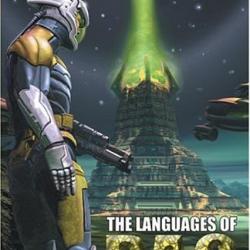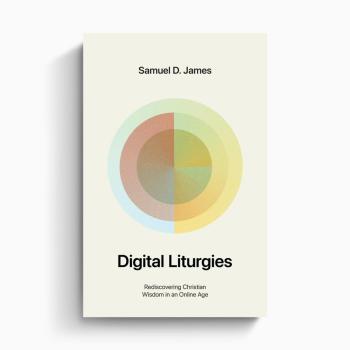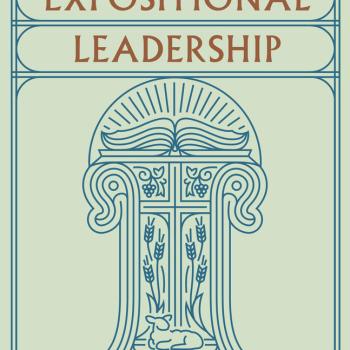Review of Reforming Hollywood: How American Protestants Fought for Freedom at the Movies by William D. Romanowski
By CHRISTIAN HAMAKER
As religious film criticism has carved out a niche in the broader world of the arts the past two decades, so has the literature on Christian film criticism and involvement. One of the better writers on the subject of Christian engagement with film is William D. Romanowski, whose books Eyes Wide Open (Brazos Press) and Pop Culture Wars (Intervarsity Press) were thoughtful treatments aimed at religious readers.
Romanowski, a professor at Calvin College, has now authored Reforming Hollywood: How American Protestants Fought for Freedom at the Movies, an outstanding historical work published in hardback by Oxford University Press.
The book shows that Protestant approaches to film have ranged widely, but the author reminds us that the condemning views of pop culture voiced by today’s Fundamentalist Protestants weren’t always so prominent. Romanowski suggests that such cultural critics’ best days may be behind them.
In this well-researched treatment, Protestants of the early and mid 20th century “saw legal censorship as un-American, undemocratic, impractical, unnecessary, and prone to political graft and corruption.” But they also “believed that a reasonable measure of self-restraint on the part of moviemakers was acceptable—even necessary—to protect the public welfare.” Yet Protestants were “by tradition defenders of American civil liberties,” so how are they now commonly “seen primarily as ardent proponents of movie censorship?” (p. 6)
Romanowski sets out to answer that question by laying out the differing historic approaches to film engagement among Protestants, or what Romanowski dubs “different perspectives” (p. 8) among the major Protestant (and Catholic) organizations that worked to mold and shape what was shown on the silver screen in the 20th century.
George Heimrich, leader in the mid-1950s of the Broadcasting and Film Commission (BFC) West Coast Office, which was part of the reorganized National Council of the Churches of Christ in the USA, was “not against free expression, but believed that producers with the right beliefs would make moral movies. Otherwise, a filmmaker’s freedom had to be restrained by the Production Code, which he believed as an application of the Ten Commandments.”
Heimrich exemplifies what Romanowski calls the pietist approach to film, a view that embraced the idea that “a steady slate of uplifting films would prove box-office gold for producers, foster right beliefs and values among Americans, enhance the nation’s reputation abroad (aiding the work of foreign missionaries), and even promote the work of the church.” (p. 126)
The BFC’s East Coast office had a radically different view of the intersection of film and faith: “Firm supporters of liberty and artistic freedom, the BFC’s East Coast faction fashioned a theology of the arts from theologian Paul Tillich’s understanding of religion as an ‘ultimate concern’ that is the source of all human activity. Religion and culture were inseparable.” (p. 158)
The author follows Protestant and Evangelical interest in films up through the last decade, noting religious reactions to films as varied as Constantine (2005), The Exorcism of Emily Rose (2005) and the newer Chronicles of Narnia films. (p. 208) But the industry’s embrace of a “Christian audience” for certain films proved to be a “mixed blessing” as Romanowski sees it, as “‘kid friendly’ became the defining feature of a ‘Christian’ aesthetic that ultimately prized those movies that entertained the whole ‘family,’ meaning movies rated PG and tuned to the level of children.” (p. 209)
That relatively recent view stands in contrast to the BFC, which had sought to treat “film as art and free expression, a means of cultural reflection and discourse.” In this approach, “the emphasis was on the extent to which a movie honestly explored the human condition using a distinctly Christian interpretative strategy.” (p. 209)
Reading that description of the BFC, one could be forgiven for thinking that Protestant film engagement has trended, for a long while, in the wrong direction. What is the “distinctly Christian interpretative strategy” among today’s Protestant film critics?
Although a pietistic approach to film is still propagated by outlets that emphasize potentially offensive content over the broader context of the story, some Protestants are pursuing a more comprehensive view of film storytelling. “This approach still exists in academic circles and among some Protestant, Catholic, and evangelical reviewers, but this ‘Christian’ model faded from public perception as the evangelical consumer culture blossomed during the 1980s and 1990s and acquired a distinctiveness of its own that was indebted to the pietist tradition,” Romanowski writes. (pp. 209-210)
As a Reformed evangelical who reviews movies, let me suggest that there may be a middle way. Why should objectionable content not be mentioned in a film review rooted in a biblical worldview? The Bible is full of warnings about the dangers of certain behaviors and attitudes. Must we bypass such cautions when illuminating today’s big-screen storytelling? No, we should not.
But those who seek to evaluate films in a way that presents more than a laundry list of potentially objectionable content are doing a service to the Christian community. I recall my days as a single adult Christian, desperate for film analysis that spoke to my worldview but recognized that I didn’t have children and that the “kid-friendliness” of various films was of little interest to my Christian soul. Most of the pietistic critics of the 1990s and 2000s have been distracted by this “easy out”: Just tell parents what they might not want their kids to see, and voila! You’ve done your job as a Christian film critic.
While mentions of objectionable content aren’t outside the bounds of religious film criticism, there’s no need for such criticism to basically stop and start with such mentions. The gift of Romanowski’s excellent treatment of the history of Protestant engagement with film is in recognizing the shortcomings of the contemporary evangelical approach to film criticism, and in providing enough history for us to find a better way forward while keeping us from falling into past traps.












